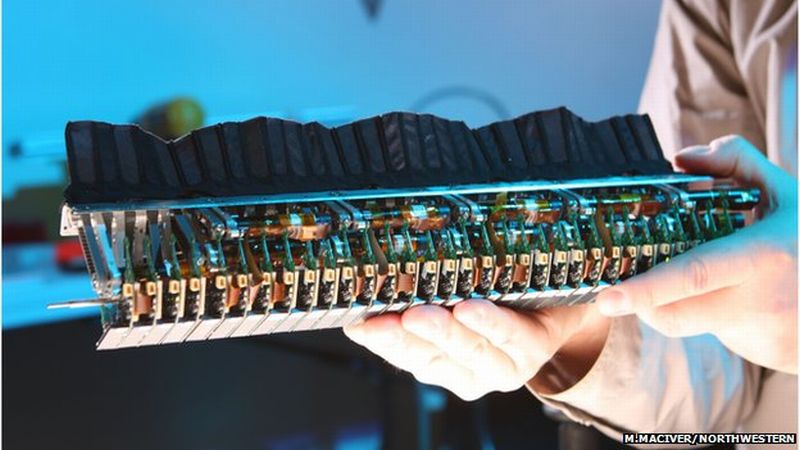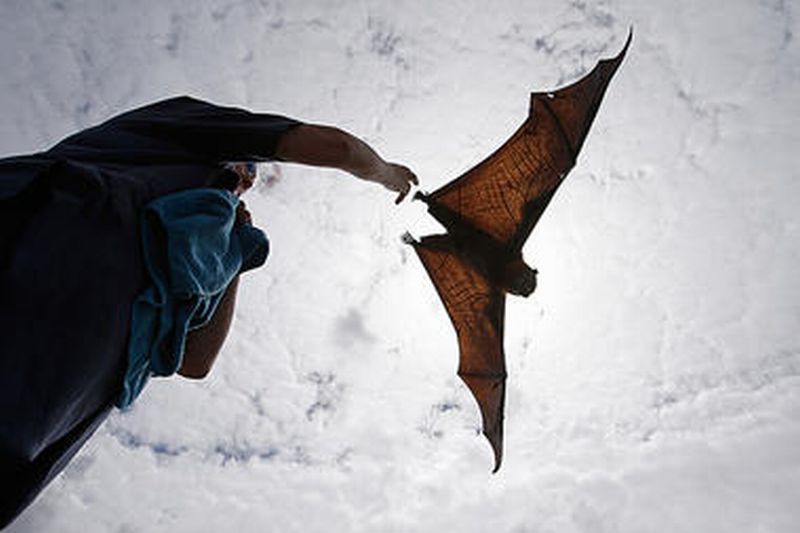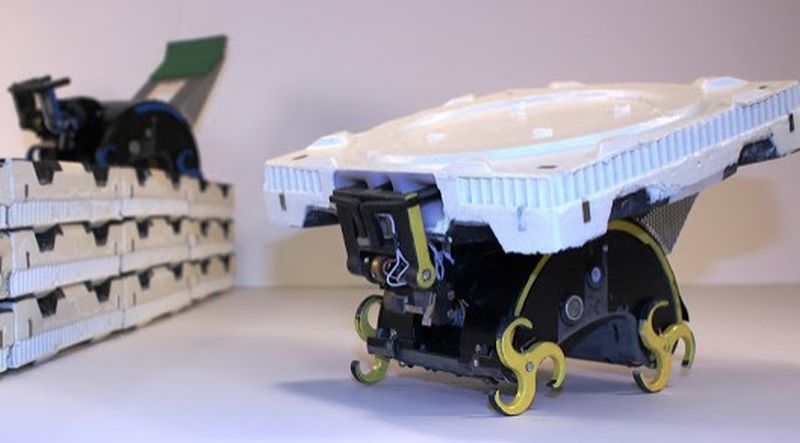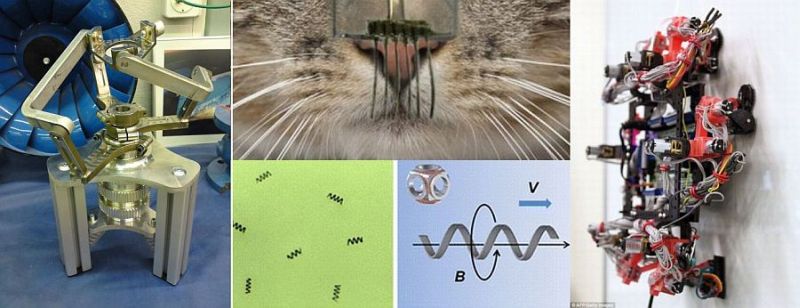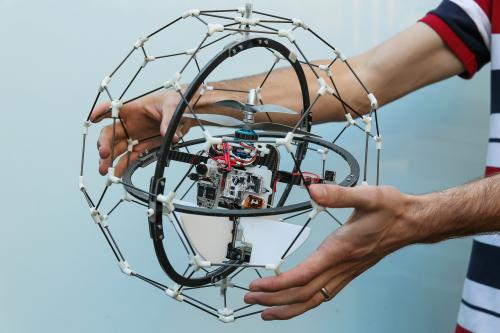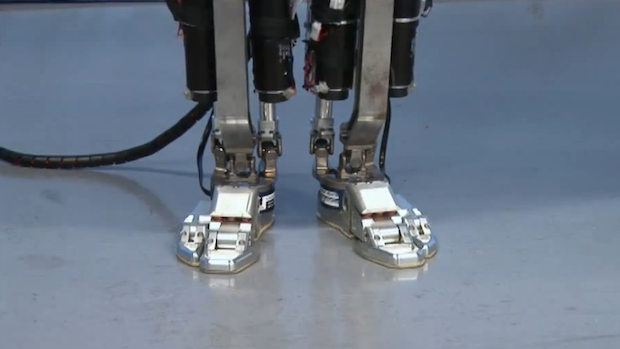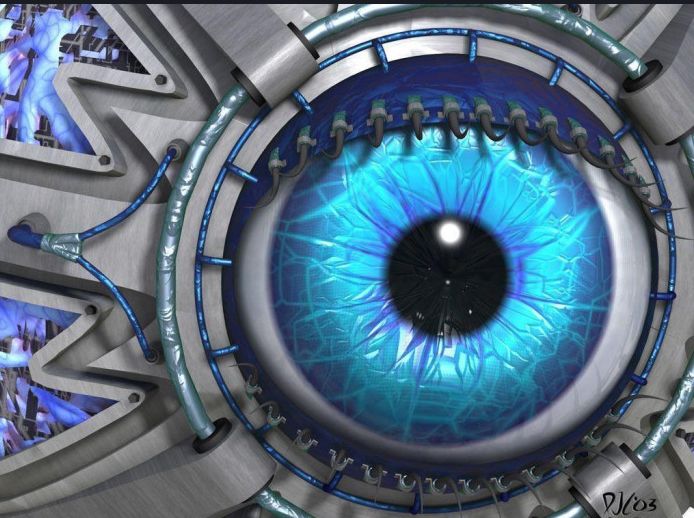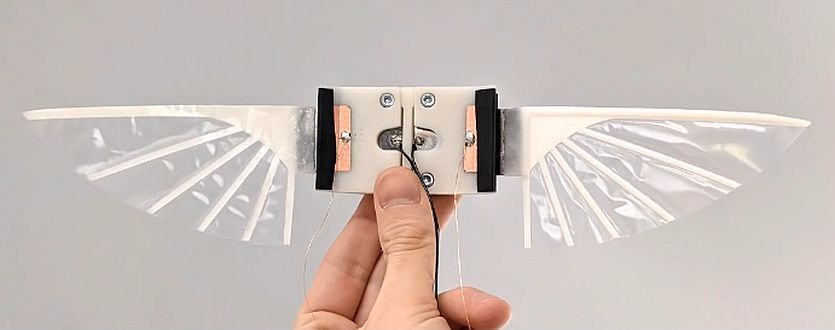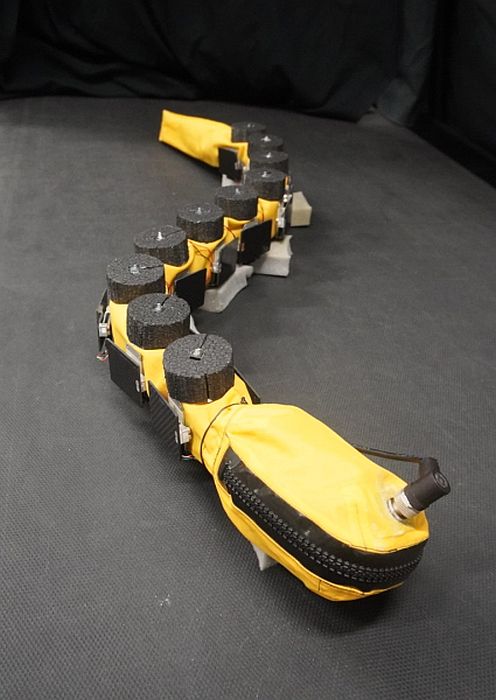In an attempt to design an underwater vehicle that can go into the depths of ocean, which are not, accessible or not safe for humans to dive in, scientists are studying the Ghost knifefish method of locomotion. The fish are known to hunt in the murky water of the Amazon basin with precision and to sense the environment, rely on the current that they pass through the water and whirl their long fin for smooth motion to move both horizontally (forward and backward) as well as vertically.
Search Results for: biomimicry
Biomimicry: Robotic Bats Might Fill the Skies Soon
According to a recent study, the manner in which bats flap their wings could actually be the source of inspiration for the upcoming designs of flying robots. The researchers investigated the way the fruit bats made use of their wings for manipulating the air around them. By developing the correct understanding of the functioning of these processes in nature, the engineers could practically come up with the design of small flying robo machines called the micro air vehicles. According to Danesh Tafti, from Virginia Tech, bats comprise of varied shapes…
Termites Inspire Crew of Tiny Autonomous Bots: Biomimicry
Inspired from termites, which are usually known for causing damages to the buildings, researchers from Harvard University have created a crew of tiny robots that are designed to work autonomously. The bio-inspired robots termed as TERMES can work without any central supervision and can carry bricks to construct structures as towers, castles and pyramids.
Robots Capitalizing On The Efficiency Of Nature: Biomimicry
Tentacles of biomimicry have entered into the technology realm as well and hence we are witnessing robots derived from the workings of mother nature. Researchers are working towards developing designs that might bestow the animal capabilities to machines. Cats Inspired E-Whiskers Electronic whiskers are one such offshoot created by the researchers at the Berkeley Lab. They fabricated this design using carbon nanotubes and silver nanoparticles. With this it seems after eclipsing the Silicon, the CNTs would now make its presence felt among robotics as well. These artificial whiskers are made…
Biomimicry: Gimball Robot Inspired From Insects
Gimball robot is a recent advancement in flying robots, which can maintain its due course even after crashing into any obstruction. Conventionally, robots find it difficult to maintain the line of course after any bump and after hitting, tend to go in arbitrary directions. The Gimball robot designed by EPFL PhD student Adrien Briod and his colleague Przemyslaw Mariusz Kornatowski, is a sensor free robot and is based on gyroscopic stabilization system to maintains its sense of direction. The robot consists of double carbon flexible spherical enclosure of 34cm in…
Biohybrid Bipedal: Muscle-Powered Two-Legged Robot
Unlike robots, our bodies are super flexible and can make delicate moves effortlessly. Components like muscles, joints, and nerves work in tandem and allow us to make precise and delicate movements with ease. Robots, on the other hand, rely on rigid structures and predefined movements; in contrast, our bodies can adapt and respond dynamically to various situations.
Interview: Dr. Enrico Donato, BioRobotics Scientist at Scuola Superiore Sant’Anna, Italy
Dr. Enrico Donato is a Doctoral Researcher at the Brain-Inspired Robotics (BRAIR) Laboratory of The BioRobotics Istitute, Scuola Superiore Sant’Anna. With an insatiable appetite for scientific exploration, he delves deep into the fascinating realm of soft robotics. His mind dances with algorithms, composing intricate control models that breathe life into these mechanical marvels.
Interview: Dr. Kai Wang Materials Scientist at The Penn State
Dr. Kai Wang is PhD, Principal Investigator, and Assistant Research Professor at the Department of Materials Science and Engineering, Penn State. His recent work on intelligent and efficient panchromatic imaging for artificial retina biotechnology, caught our attention and so we tried to touch base with him for an interview. We got lucky, as he agreed to spend some time with us. Dr. Wang, here, talks about his quest to understand the mechanisms of cognition within the neural topological structures of the brain. And how these natural intelligences can be influenced…
Bio-Inspired Device that Mimics Human Eye: Artificial Vision Systems
Inspired by the natural design of our retinas, scientists at Penn State have created a sensor array using narrowband perovskite photodetectors to replicate the function of our cone cells. Cone cells in our eyes are responsible for color vision. And they are sensitive to red, green, and blue light wavelengths.
Interview: Dr Jie Yin, Associate Professor at North Carolina State University
Dr. Yin received his Ph.D. in Engineering Mechanics from Columbia University. Prior to join NC State, he worked as a Postdoctoral Associate at MIT and an Assistant and Associate Professor at Temple University. He is the recipient of the NSF CAREER Award and Extreme Mechanics Letters (EML) Young Investigator Award.
Insect sized Flying Robot with Flapping Wings: Micro air Vehicle
Researchers at the University of Bristol, U.K. have fabricated a flapping-wing microrobot that can produce more power than a similar-sized insect. The micro-air vehicle is a product of biomimicry, inspired from bees and other flying insects.
Interview: Takashi Ozaki, Research Scientist at Toyota Central R&D Labs, Japan
Takashi Ozaki is the frontier research leader at Beyond-X Research Domain, Toyota Central R&D Labs. Inc. Japan. He completed his B.E. and M.E. from Kyoto University. His area of research fields includes – bioinspired actuators and robotics, micro electromechanical systems and microfabrication processes.
Interview: Dr. Guido de Croon, Professor at Delft University of Technology Netherlands
Dr. Guido de Croon is a Full Professor at Delft University of Technology Netherlands. Dr. Croon’s research interests focus on the bio-inspired robotics, micro air vehicles, vision-based navigation and swarm robotics.
Swimming is Dynamics of Two Nervous System: AgnathaX
Starting in the early 1900s, one of the problems that baffled neuroscientists worldwide was the role of central and peripheral nervous systems in swimming locomotion. In other words, how swimming locomotion is generated and how vertebrates synchronize the rhythm that is required for the locomotion.
Interview: Dr. Song Chaoyang, Assistant Professor at Southern University of Science and Technology China
Dr. Song Chaoyang is an Assistant Professor, Southern University of Science and Technology (SUSTech) China. His Bionic Design + Learning Lab conducts research in Bionic Design, Robot Learning and Design Science. His team’s vision is to create advanced robotic systems that are sustainable and intelligent.

